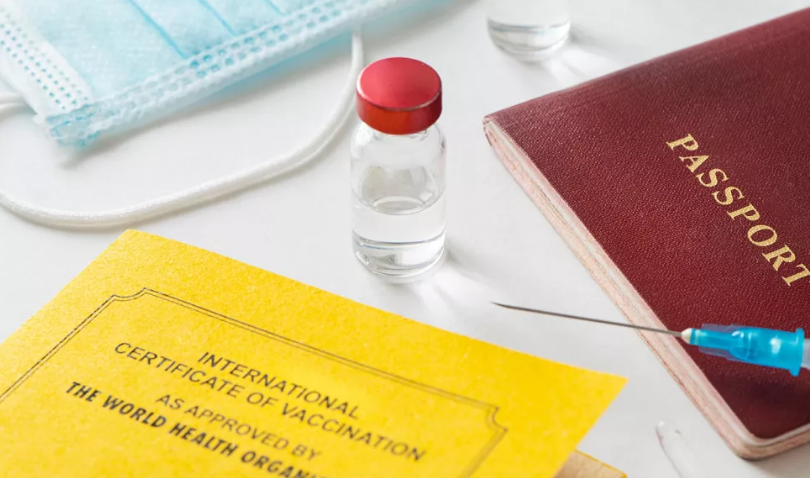Health
Cannabis and Cocaine Lead EU Drug Use, But Synthetic Drugs Pose Growing Risks
Cannabis and cocaine remain the most commonly used drugs in the European Union (EU), but emerging synthetic substances are raising new public health concerns, according to a recent report by the European Commission and the Organisation for Economic Co-operation and Development (OECD).
Drug Use Patterns Across the EU
The report highlights that nearly one in three Europeans has tried illegal drugs at some point, with 15% of young adults using cannabis and 2.5% using cocaine in 2024. However, drug consumption patterns vary significantly between countries.
- Cannabis use is highest in the Czech Republic, Italy, France, and Spain, while the lowest rates are found in Malta, Turkey, and Hungary.
- Cocaine use is most prevalent in the Netherlands, Spain, and Ireland, but significantly lower in Turkey, Portugal, Poland, and Hungary.
Despite variations in drug policies across Europe, experts say tougher laws do not necessarily impact drug availability, especially among young people.
“The major penalties impact only the people who use the substance once or fewer times in a year, so not the real [heavy] users,” said Sabrina Molinaro, an epidemiologist at Italy’s National Research Council and coordinator of the European School Survey Project on Alcohol and Other Drugs.
Her research has monitored 16-year-olds’ drug use in Europe since the 1990s, revealing consistent generational trends. Notably, while teenage boys historically used cannabis more than girls, that gender gap is narrowing, and in some countries, girls now surpass boys in cannabis use.
The Rise of Synthetic and Harder Drugs
While cannabis and cocaine remain the dominant substances, other illegal drugs—such as MDMA (ecstasy), heroin, opioids, psychedelics, and synthetic drugs—are posing increasing threats.
Synthetic drugs, including lab-made cannabinoids and stimulants, are particularly concerning due to their unpredictable chemical makeup and low-quality production conditions.
“They are so dangerous because you don’t know what you are taking,” Molinaro warned, adding that some synthetic drugs are produced in poorly regulated labs, leading to potential contamination.
The EU Drugs Agency (EUDA) reported that in 2022, authorities dismantled hundreds of synthetic drug labs across the continent. The following year, seven new synthetic opioid substances—known for their high potency—were detected through the agency’s early warning system.
Health Risks and Policy Challenges
Regular drug use in the EU is associated with cardiovascular diseases, mental health issues, accidents, and infectious diseases like HIV, particularly among people using injectable substances.
Molinaro stressed that the rising presence of synthetic opioids poses serious health risks to the adult population. Given their potency, even small doses can be lethal, increasing the urgency for rapid detection and intervention.
As Europe faces an influx of new and harder-to-regulate drugs, public health experts warn that governments must adapt quickly to prevent widespread harm.
Would you like any additional details or modifications?
Health
Europe Faces Growing Challenges in Meeting Medical Care Needs, EU Report Shows

A new report has highlighted stark disparities in healthcare access across Europe, revealing that a growing number of citizens face unmet medical needs due to systemic issues such as high costs and long waiting times.
According to the latest data from Eurostat and the Health at a Glance: Europe 2024 report, 3.8 per cent of EU residents aged 16 and over reported unmet medical needs in the past year. However, the percentage climbs significantly when focusing solely on individuals who actively required healthcare services — with some countries reporting unmet needs among over 20 per cent of this group.
The causes are twofold: healthcare system barriers, including long waiting lists and treatment costs, account for 2.4 per cent of all cases, while 1.4 per cent stem from personal reasons such as fear of doctors, lack of time, or lack of knowledge about available care.
Unmet healthcare needs vary widely across the continent. Estonia tops the list within the EU, with 15.5 per cent of people reporting unmet needs, followed closely by Greece and Albania, each over 13 per cent. Even wealthier Nordic countries show surprising figures — Denmark (12.2 per cent), Finland, and Norway (over 7.5 per cent) — despite high healthcare spending. Conversely, countries such as Germany (0.5 per cent), Austria (1.3 per cent), and the Netherlands (1.4 per cent) report the lowest levels, pointing to more efficient and accessible healthcare systems.
Cost is a dominant barrier in nations like Greece and Albania, where over 9 per cent of citizens cited unaffordable care. In contrast, long waiting times are the primary issue in countries like Estonia (12 per cent) and Finland (7.5 per cent).
Income inequality also plays a major role. On average, 3.8 per cent of low-income individuals across the EU report unmet needs due to healthcare system issues — more than triple the 1.2 per cent reported by higher-income groups. In Greece, that gap is particularly wide, with 23 per cent of low-income respondents affected.
Healthcare experts say these disparities reflect more than just economic factors. Dr. Tit Albreht, President of the European Public Health Association (EUPHA), noted, “Unmet health needs arise from different reasons, including how well healthcare governance integrates services to meet population needs.”
Industry leaders, such as Tina Taube of the European Federation of Pharmaceutical Industries and Associations (EFPIA), stressed the importance of timely access to diagnosis and treatment. “Unmet needs are context-specific,” she said. “It’s not just about product availability, but also healthcare system readiness.”
Andy Powrie-Smith of EFPIA added that patients in some European countries wait up to seven times longer than others for the same treatments due to regulatory delays and varying national infrastructures.
The findings underscore the need for a more coordinated, equitable healthcare strategy across the continent, especially as Europe faces the challenges of an ageing population and increasingly complex medical technologies.
Health
Chinese Nationals Charged in U.S. with Smuggling Toxic Fungus Labeled a Potential Agroterrorism Threat

U.S. federal authorities have charged two Chinese nationals in connection with smuggling a dangerous agricultural fungus into the country, a move investigators describe as posing significant national security risks.
Yunqing Jian, 33, and Zunyong Liu, 34, are accused of conspiracy, smuggling, making false statements, and visa fraud after allegedly attempting to bring Fusarium graminearum — a toxic fungus capable of devastating crops and harming humans and livestock — into the United States. The case was detailed in a court filing by the Federal Bureau of Investigation (FBI) in Detroit.
The fungus, which targets essential food staples like wheat, maize, barley, and rice, is described in a scientific journal cited by the FBI as a “potential agroterrorism weapon.” Experts warn that its spread could inflict serious damage on global food security and agricultural economies.
U.S. Attorney Jerome Gorgon Jr. emphasized the seriousness of the case, stating: “The alleged actions of these Chinese nationals, including a loyal member of the Chinese Communist Party, are of the gravest national security concerns.”
Jian made her first appearance in a Detroit federal court on Tuesday and remains in custody awaiting a bond hearing scheduled for Thursday. A court-appointed attorney for her initial appearance declined to comment.
According to the FBI’s complaint, the investigation began in July 2024 when Liu was stopped at Detroit Metropolitan Airport. During a routine screening, customs officials discovered suspicious red plant material in his backpack. Liu initially claimed not to know what it was but later admitted he planned to use it for research purposes at the University of Michigan, where Jian is currently employed and where Liu previously worked.
Authorities say Liu’s mobile phone contained an article titled “Plant-Pathogen Warfare under Changing Climate Conditions,” raising further concerns about the intended use of the samples. The FBI believes the two individuals were coordinating to introduce the pathogen into a U.S. research setting without proper clearance or oversight.
Liu was denied entry to the U.S. and deported in July. Charges against both individuals were filed this week, as prosecutors continue to investigate the scope of the alleged conspiracy.
The case underscores growing concerns in the U.S. over biosecurity and potential misuse of scientific research amid rising geopolitical tensions.
Health
US Expands Measles Vaccination Guidance Amid Global Surge in Cases
-

 Business1 year ago
Business1 year agoSaudi Arabia’s Model for Sustainable Aviation Practices
-

 Business1 year ago
Business1 year agoRecent Developments in Small Business Taxes
-

 Politics1 year ago
Politics1 year agoWho was Ebrahim Raisi and his status in Iranian Politics?
-

 Business11 months ago
Business11 months agoCarrectly: Revolutionizing Car Care in Chicago
-

 Business11 months ago
Business11 months agoSaudi Arabia: Foreign Direct Investment Rises by 5.6% in Q1
-

 Technology1 year ago
Technology1 year agoComparing Apple Vision Pro and Meta Quest 3
-

 Politics1 year ago
Politics1 year agoIndonesia and Malaysia Call for Israel’s Compliance with ICJ Ruling on Gaza Offensive
-

 Sports10 months ago
Sports10 months agoKeely Hodgkinson Wins Britain’s First Athletics Gold at Paris Olympics in 800m


























